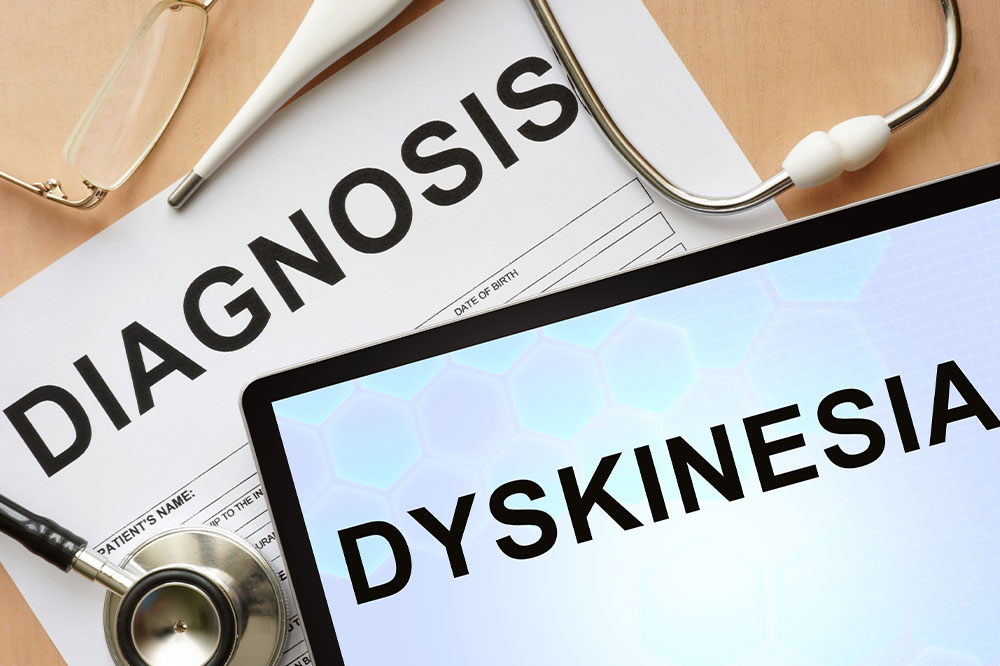
Dyskinesia – Symptoms, causes, and remedies
Dyskinesia is a health condition characterized by uncontrollable and involuntary movements of the face, trunk, arms, or legs. It is mainly triggered by the side effects of long-term use of prescription remedies for Parkinson’s disease. Not all patients with Parkinson’s disease show these side effects, and the intensity of the symptoms may vary. The symptoms may be intense immediately after treatment or appear as a delayed reaction. Keep reading to learn more about dyskinesia.
Early warning signs and symptoms
Dyskinesia tremors may affect just one limb, a few parts, or the entire body. The symptoms appear when symptoms of PD, like tremors, bobbing of the head, stiffness, and wriggling, are subdued and under control. The common symptoms of dyskinesia include-
- Bobbing of the head
- Sticking out the tongue
- Random movements in lips and jaw
- Rocking
- Tics and shakes
- Swaying of hips or torso
- Writhing
- Waving of hands and legs
- Rapid blinking
- Breathing difficulties
Causes
Long-term use of Parkinson’s disease (PD) treatments overstimulates the dopamine receptors in the brain and increases its production. Dopamine is a hormone and neurotransmitter responsible for many bodily functions, including movement. When there is excessive dopamine production, it affects the way nerves communicate, causing various types of uncontrollable and involuntary movements. Though rare, dyskinesia can also happen due to various other underlying conditions:
- Brain injury
- Tourette’s Syndrome
- Wilson’s disease
- Autism spectrum disorder
Treatment
Adjusting the dosage and timing of prescription remedies for PD is the first line of treatment for dyskinesia. Other approaches include-
- Doctors may change the formulation and wait and observe the response for the new prescriptions or treatments.
- Doctors may also combine oral prescriptions with additional treatments that work on brain chemicals and help control dyskinesia.
- Deep brain stimulation (DBS) has helped thousands of people with PD and dyskinesia. Doctors advise this procedure for patients with PD for at least four years. During this procedure, a doctor implants a small device in the brain that sends electrical signals to brain areas that control movement. These signals then block the abnormal signals that go through the different parts of the body, like hands, legs, and face, and stop the involuntary and jerking movements.
Foods that help with dyskinesia
Besides mobility and movement problems, people diagnosed with dyskinesia may sometimes experience difficulty swallowing food (dysphagia). They may also go through rapid body mass loss and require calorie-rich food. Foods should also be able to prevent and control nausea, another PD symptom. The best foods to manage dyskinesia symptoms include-
- Bright-colored fruits and vegetables
- Omega-3-rich fatty acids
- Antioxidant-rich foods like grapes, berries, and cherries
- Whole grains
- Legumes
- Protein from lean meat, fish, and eggs
- Carbs from rice, bread, and potatoes
- Plenty of water
Remedies
Eating on time and taking prescriptions 30 minutes before or 60 minutes after meals can help manage tremors and movements. Eat well-cooked and soft foods so you can chew and swallow them easily. It will also help in easy digestion. Keep yourself hydrated with adequate water and fresh juices.
A patient may feel stressed or anxious by the constant involuntary movements and tend to avoid socializing. Consult a healthcare expert and share your concerns with them. To beat stress and anxiety, engage in light exercises, easy hobbies, or listen to music. An increase in stress levels can worsen symptoms.




